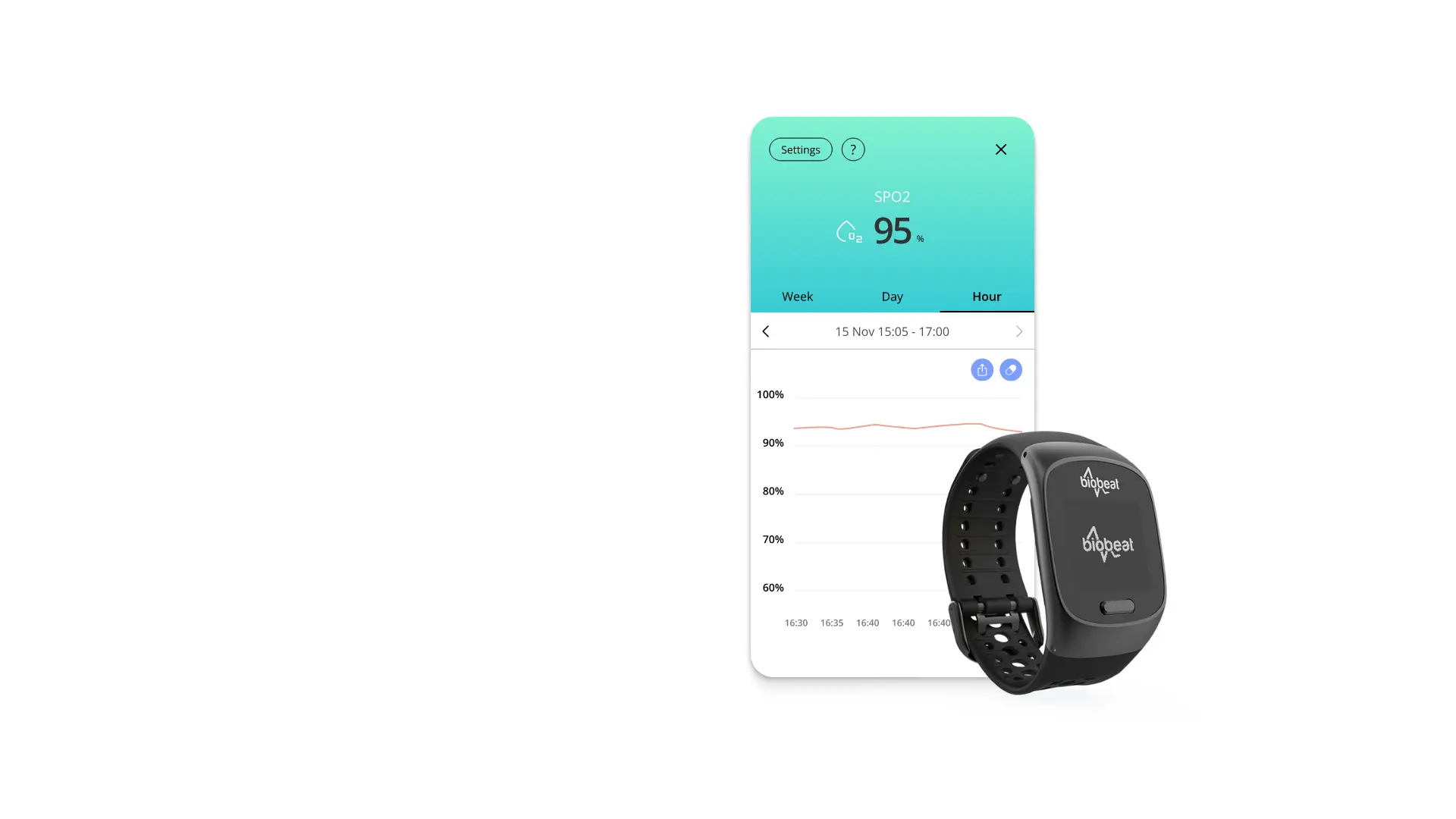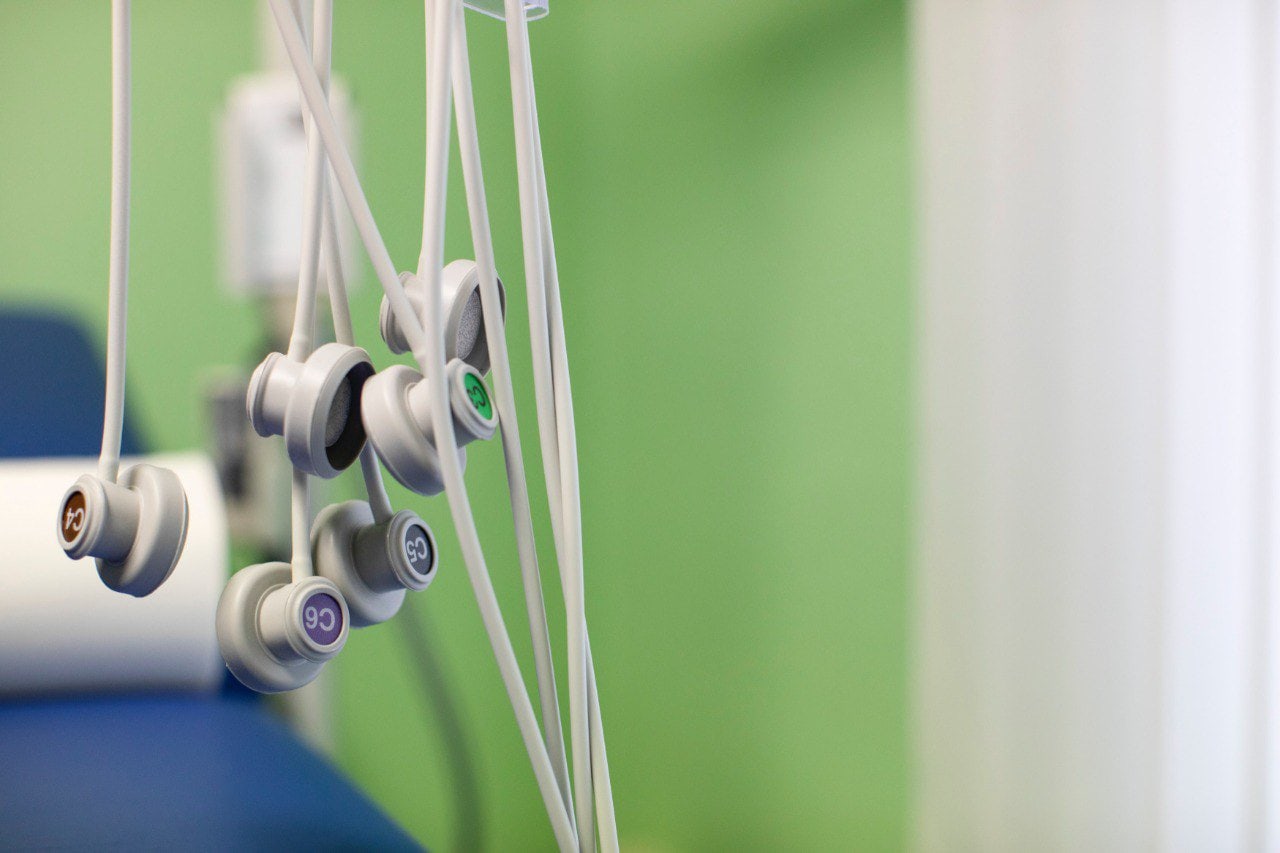About the Project
BioBeat uses the latest PPG sensing, IoT connectivity, and AI-driven analytics to transform remote patient monitoring with vital sign tracking in a convenient wearable form.
Traditional remote monitoring methods often lack efficiency and require bulky equipment. So BioBeat’s objective was to create a comprehensive solution that enables data collection and real-time insights.
Country: Israel
Industry: Healthcare, Medical IoT
Duration: 8 months

What we Achieved
User-friendly Mobile App
Designed a mobile app that enables early detection of vital signs changes and potential health issues.
Uninterrupted Data Transmission
The app allows efficient remote patient monitoring 24/7 for timely interventions.
Meets Regulatory Standards
Compliant with HIPAA and GDPR.
Scalable System
The system is scalable to monitor unlimited patients at hospitals or at home.
2x Lower Operational Costs
The new system significantly lowers operational costs for healthcare providers.
FDA Approved
The project has received CE mark approval and FDA clearance.
Solution
Empeek designed a mobile app software that uses custom-designed wristwatches equipped with PPG sensors that capture vital signs hundreds of times per second. Data is securely transmitted to a cloud-based server accessible by both patients and healthcare professionals through dedicated mobile applications.
Mobile apps (iOS & Android)
User-friendly apps allow patients to view their health data, set medication reminders, and communicate with healthcare providers.
Hospital Workstations
Medical professionals can access real-time patient data and historical trends, facilitating informed decision-making.
![Real-Time Health Monitoring System Using IoT [Case Study] 1](https://empeek.com/wp-content/uploads/2024/07/Title-scaled.webp)
Challenges
Traditional methods of monitoring patients remotely often involve infrequent check-ins and limited data collection. This system aimed to bridge this gap by providing a comprehensive solution that covers security and network availability issues.
Continuous Health Data Collection
The system should gather vital signs like heart rate, blood oxygen levels, and activity data by utilizing wearable devices equipped with PPG sensors.
Real-time Data Transmission
Data should be securely transmitted to a cloud server hundreds of times per second, enabling constant monitoring.
Broadband Network Availability
Since the system should transmit data in real-time, we have to take into account broadband network availability and make sure the system accurately captures data even during off times.
Core System Components
Mobile App
The app allows patients to view health data, set baselines, and receive medication reminders. It also provides access to customized dashboards and analytical tools for doctors to monitor patients remotely.
- Data visualization
- Trend analysis
- Medication reminders
- Secure communication with healthcare providers.
![Real-Time Health Monitoring System Using IoT [Case Study] 2](https://empeek.com/wp-content/uploads/2024/07/Title-1.webp)
Core System Components
Wearable Devices
- BioBeat uses MAX30100 PPG sensors from Maxim Integrated.
- Sensors collect data at hundreds of samples per second.
- Then, it transmits data wirelessly via BLE or cellular connections. For the patient’s comfort, it is designed as a comfortable wristwatch for daily wear.
![Real-Time Health Monitoring System Using IoT [Case Study] 3](https://empeek.com/wp-content/uploads/2024/07/Title-3.webp)
Core System Components
Cloud Server
- The server processes data received from wearable devices in real time.
- It stores and enables secure management of patient health data.

Continuous Data Collection
Monitor vital signs remotely through wearable devices
Real-time Insights
Provide healthcare providers with immediate access to patient data.
Improved Patient Engagement
Empower patients to actively participate in their health management.
The Future of Healthcare
As technology continues to evolve, real-time health monitoring systems have the potential to revolutionize healthcare delivery. This paves the way for personalized medicine, allowing doctors to tailor treatment plans based on individual needs and real-time data.
![Real-Time Health Monitoring System Using IoT [Case Study] 4](https://empeek.com/wp-content/uploads/2024/06/blog-nursing.png)
Explore Our Core Healthcare Software Development Services
Project Discovery Phase
The aim of the Project Discovery is to understand project goals, risks, and stakeholders’ requirements before moving forward into further planning and development of the software product. This process sets the stage for the entire project by outlining objectives, opportunities, challenges, and details needed to guide the development team as well as business owners.
Learn MoreWeb App Development
We build interactive web applications that live on remote servers and can be accessed by users from anywhere. We use languages like HTML, CSS and JavaScript on the front-end and databases, servers and frameworks on the back-end to build functional, secure and scalable web apps with rich user experiences.
Learn MoreQA & Testing
We design test cases, scripts and plans to evaluate the functional, security, reliability and performance aspects of a software application. The goal is to identify defects, gaps or issues earlier on rather than post-deployment so we can address and resolve them during the development phases.
Learn MoremHealth App Development
We create applications for smartphones, tablets or wearable devices that can monitor, collect, analyze and give feedback to users about various health, wellness and medical data from sensors, user input and other connected sources. Empower your patients and improve health outcomes through greater engagement and access to information.
Learn MoreAbout Empeek
Engineering a better healthcare future.
Empeek is a custom healthcare software development company that helps healthtech startups and medical facilities create and leverage innovative, HIPAA/HITECH compliant technology solutions such as EMR and telemedicine systems, patient-centered crossplatform apps, AI-powered tools, IoT ecosystems, and others.
150+ Specialists
8+ Years on the Market
HIPAA & GDPR Compliant
FAQs
Can users see historical data?
Yes, they can observe historical information by month.
Do customers need to put their physical conditions data into this app?
Yes, they should admit their state of health in this application.
Where can healthcare providers also apply IoT solutions?
The most suitable domains for IoT-based solutions are telemedicine, mobility services to patients’ vehicles, emergency response intelligence, point-of-care devices, assets management, and others.


![Remote Patient Monitoring Software [Case Study]](https://empeek.com/wp-content/uploads/2024/09/rpm-10-k-users.jpg)





